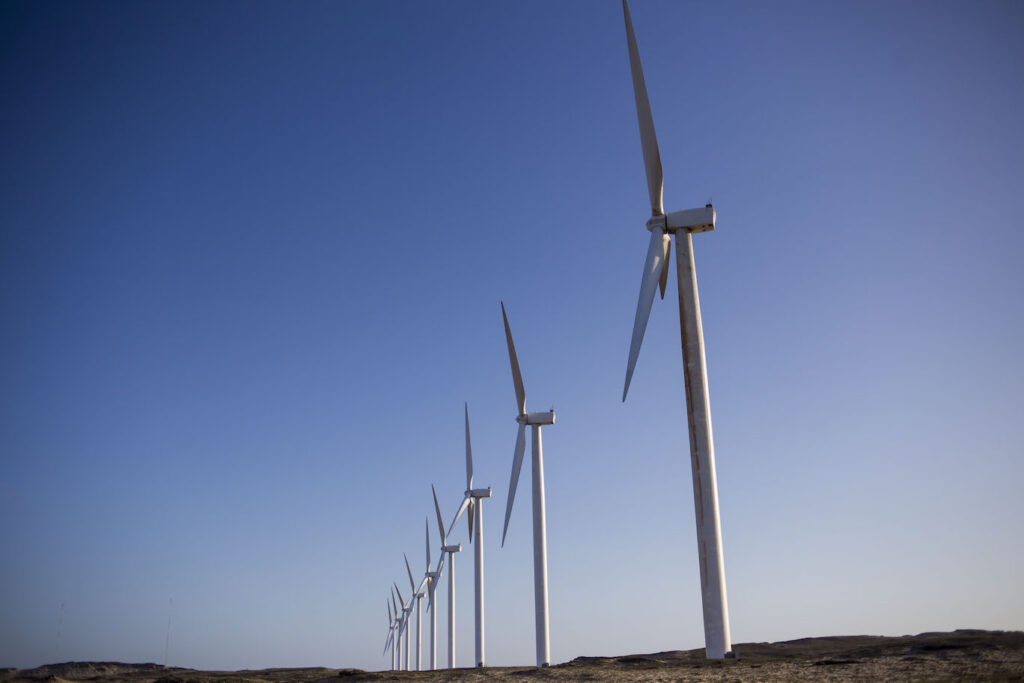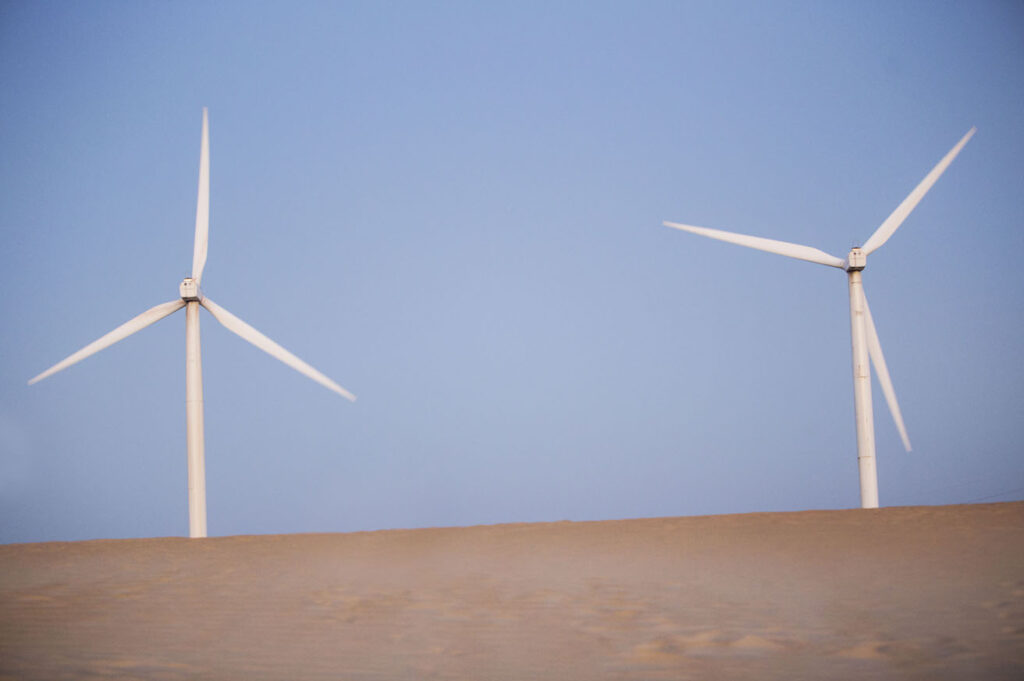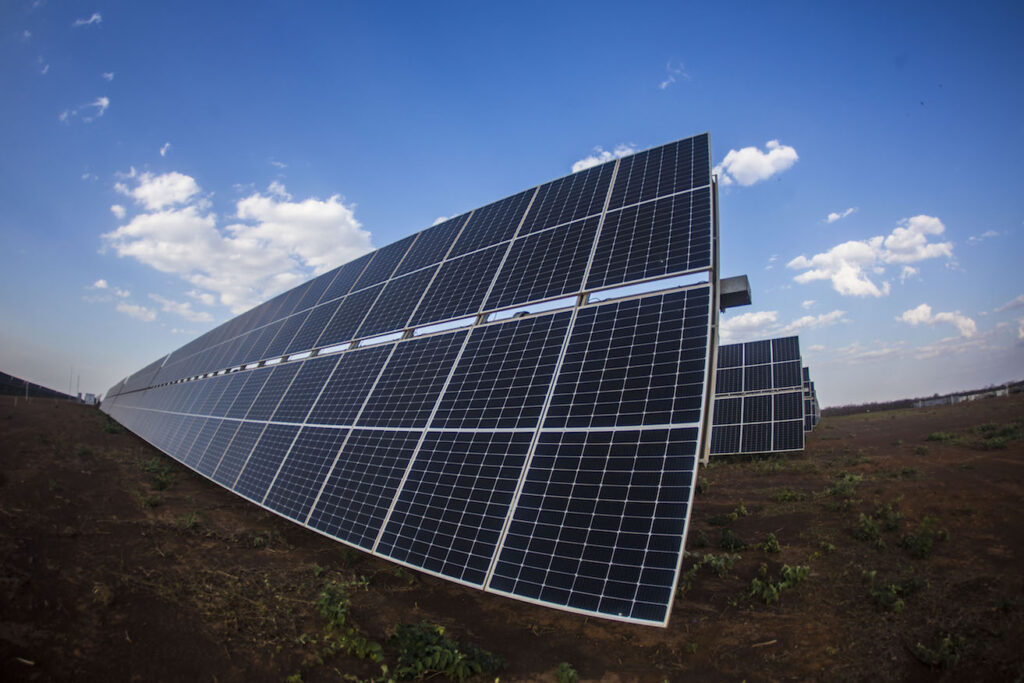Where to Invest
Energy transformation at full throttle
23:21 4 de December de 2022 Por infra

Brazil’s renewable energy potential is more than 18 times the demand expected by 2050. In the last three years, Ceará has advanced as never before in the transformation of its energy matrix, towards environmentally sustainable energy generation. From 2019 to 2022, the growth in the volume of renewable energy generation, solar and wind, in the state, reached 25%, according to Aneel. And this number will continue to grow.
The electric energy matrix in Ceará is currently composed of 39% thermoelectric generation and 60% renewable (solar and wind), according to data from the National Electric Energy Agency (Aneel) for 2022. Ceará has 159 enterprises in full operation, which totals a little more than 5.2 gigawatts (GW) of installed power. Of this total, 3.2 GW are from renewable sources and 2 GW from thermal sources.
In August 2022, Ceará had 30 thermoelectric plants, 99 wind farms, and 29 solar plants. All this energy production is launched into the National Interconnected System (SIN), the body responsible for the transfer for distribution in the country.
Ceará’s goal is to expand partnerships and consolidate itself as a reference in clean energy, creating new opportunities and generating more jobs, besides contributing to the preservation of the environment. The strengthening of the low carbon energy matrix in Ceará is consolidated in a decree that institutes the State Plan for Fair Energy Transition – Green Ceará, of May 2022, a document that will enable the creation of a favorable environment to attract new investments and financing in the area. Ceará is already talking to the World Bank to establish partnerships for technical assistance in the area of clean energy.
Among the directives of Green Ceará are: cooperation with the productive sector and with national and international agencies that foster research, development and innovation, to implement and strengthen the scientific-technological structure and support development projects and technology transfer aimed at the production, processing and use of Renewable Energies, Biofuels, Green Hydrogen and its Derivatives; and the idealization of public policies that cogitate objectives and goals for research, innovation, production, processing, use and commercialization of Renewable Energies, Biofuels, Green Hydrogen and its Derivatives.
Wind energy projects in Ceará

There are 174 projects in 21 municipalities, of which 99 are in operation, 1 with construction started, 28 to start construction and 46 in the Grant Application Order (GAO) phase. Much of the energy generated by renewable energy will be used for the green hydrogen generation hub project. In addition to the investments in the Hydrogen Hub, this development brings with it a series of opportunities in related sectors of its production chain.
According to Constantino Frate, coordinator of Attraction of Structural Industrial Enterprises at Sedet, we are talking about basic petrochemicals, production of gasoline, diesel, aviation fuel, fertilizers, paints, plastics, solvents, equipment such as fill cells, which are the devices that will be coupled to the engine to transform hydrogen into electric current and drive the electric motor, for example.
Besides hydrogen supply systems, pumps, dispensers, compressors, batteries, service companies, engineering companies, construction and assembly companies, maintenance companies, and consulting companies. There is also the opportunity to create a new industry in Ceará, that of shipyards specialized in manufacturing structures for offshore wind power generation.
BI Energia bet on Ceará to implement the country’s first Offshore Wind complex, in the municipality of Caucaia. At full production, the Caucaia wind complex will be able to supply 30% of the residential energy consumption needs of the state of Ceará. In the licensing phase, this first project of the company is receiving support from the state and should generate new business and jobs.
“We have three projects under evaluation by Ibama. Caucaia, which is the most advanced, and should generate 576 MW; the Camocim plant, also in Ceará, which will have a capacity of 1,200 MW and another one in Rio Grande do Norte, the Pedra Grande plant, of 624 MW”, says Lucio Bomfim, partner at BI Energia.
Solar energy projects in Ceará

Ceará today has 728 solar energy projects, distributed among 36 municipalities. Of this total, 26 are in operation, 5 with construction started, and 91 to start construction. Also, there are 606 projects in the GAO phase, still in the environmental and feasibility study phase.
The Alex Solar Complex, by Elera Renováveis, between the municipalities of Limoeiro do Norte and Tabuleiro do Norte, on highway BR 437, about 230 km from Fortaleza, completed one year of operation, contributing significantly to the social and environmental development of the region. 950 million Reals (about 180 million dollars) were invested, of which 6 million Reals (about 1.1 million dollars) were earmarked for ESG (Environmental, Social and Governance) initiatives. With a generation capacity of 360MWp, it is enough energy to supply almost a million homes. In the nine solar parks that make up the complex, there are 810,000 energy generation modules in an area of 830 hectares. During the construction phase, the Alex Complex generated 1,300 direct jobs and 2,500 indirect jobs. Of these, about 40 jobs are directly or indirectly linked to the operation of the enterprise, with about 70% of the labor from the region.
The company Omega, one of the largest Brazilian companies in the renewable energy sector, will also build a solar photovoltaic park with 4.6 GW of installed power and 8 million plates. It should occupy 8,000 hectares in the region of Aracati and Icapuí.
Biogas
Ceará also transforms garbage into energy assets, with one of the largest biomethane plants in Brazil, located in the municipality of Caucaia, responsible for supplying 15% of the natural gas used in Ceará’s industry. Biogas is a type of biofuel produced from the decomposition of organic materials (of vegetable or animal origin), which are broken down, producing a mixture of gases, most of which is composed of methane. Methane, in turn, is a combustible gas that can be used to generate thermal and electrical energy and as vehicular fuel.
The company that manages the Caucaia landfill, the first biomethane plant in the Northeast, is GNR Fortaleza. The unit has a production capacity of 96 thousand cubic meters of biomethane per day. Developed in partnership with Ecometano, the venture is focused on selling the product to Ceará’s natural gas distributor, Cegás, and not for electricity generation.
See here the Wind and Solar Atlas of Ceará.
Other energy projects underway
Pecém Oil Refinery
The Brazilian multinational Noxis Energy, controlled by Israeli capital, is already working in the State of Ceará to take advantage of the energy potential and the benefits of operating in the region. The company will invest more than 1.2 billion dollars to build an Oil Refinery in the Industrial and Port Complex of Pecém, in Ceará, with an initial production capacity of 100 thousand barrels of oil per day. The project will also attract the construction sector, which Noxis will develop the engineering projects for. It is estimated that 3 thousand direct and indirect jobs will be created. Among the main products to be manufactured are Marine Fuel (bunker), Diesel and Gasoline.
Dislub Energia: The fourth largest fuel distributor in the North and Northeast regions of Brazil, in May 2022 signed a pre-contract. with the Pecém Complex for the implementation of its project in the park
With an initial investment of 300 million Reals (about 60 million dollars), of which, in the first phase of the venture, 200 million Reals (about 40 million dollars) aims to create a more modern and efficient logistics solution for the fuel market in Ceará. The initial storage capacity is 60 million (MM) liters of fuel.
It is estimated that 350 jobs will be created during the construction of the complex and another 100 jobs during operation. The enterprise is expected to start operating in 2025.
Supergasbras: A Company from the SHV Energy Group, Supergasbras signed in March 2022 an agreement with the Pecém Complex to invest in the construction of a terminal for the storage of liquefied petroleum gas (LPG). With the signing of this pre-contract, Supergasbras’ area is guaranteed.
With a capacity to move 480 thousand tons/year, the tanking terminal will be used to store LPG that is shipped to Brazil mostly from the North American market. The company’s estimated investment is 920 million Reals (about 184 million dollars). In the construction phase it should create approximately 200 direct jobs.
This investment will significantly improve the infrastructure for the primary supply of LPG in the entire Northeast region of Brazil.
Stolthaven Santos: The company signed a memorandum of understanding with the Pecém Complex in March 2022 to build a tank farm. A tank farm is a terminal for handling liquid fuels that arrive by ship and leave the port by truck to supply gas stations and airports in Ceará. Today, only the Port of Mucuripe, administered by the Companhia Docas do Ceará, has a structure of this type. Controlled by the Stolt-Nielsen group, a global leader in integrated solutions for the transport and storage of bulk liquid products, Stolthaven intends to operate with larger ships with a capacity to store up to 90 thousand tons of fuel. The company also intends to install a bonded warehouse for ammonia, the raw material used in the production of green hydrogen.
Santa Quitéria Project for the production of phosphate and uranium
The company Galvani Fertilizantes, in partnership with Indústrias Nucleares do Brasil (INB), won the bidding and is responsible for the investments and for developing the processes, the engineering and the studies for the environmental licensing, the construction and the assembly of the Project undertaking.
The Santa Quitéria Project will have an investment of 2.3 billion Reals and will produce 500,000 tons of phosphate fertilizers and 250,000 tons of bi-calcium phosphate annually to supply agriculture and cattle-raising in the North and Northeast regions. In addition to 2,300 tons of uranium in the form of uranium concentrate (yellowcake), extracted from phosphoric acid, which will be used as raw material to manufacture fuel for thermonuclear energy generation.
The project is in the nuclear and environmental licensing phase with the National Nuclear Energy Commission (CNEM). Once approved, the construction cycle will begin and should last two years. The forecast is that 2,800 direct jobs will be created during this time.
The plant will not have a tailings dam, thanks to a technological change that allows the ore to be processed dry, which has generated improvements both in the process and in the management of risks to the environment and to people. In addition to the 17% reduction in water consumption, this change eliminates the tailings dam, with a totally closed water system, with no water discharged into the environment. The material that used to go into a dam now goes into a phosphor-gypsum and lime pile, according to the specialists.
Multimedia
Radio: Leonardo Retto, founder and CEO of Telhas Telite
Radio: Açucena Gois, CEO and founder of IDSoft
Radio: Lúcio Bonfim, owner-partner of BI Energia
Live: Marcelo Maranhão, president of Setcarce (Union of Cargo Transport and Logistics Companies of Ceará), and Jurandir Picanço, consultant for the Federation of Industries of the State of Ceará
Podcast: Sergio Araújo, Coordinator of Attraction of Structuring Industrial Enterprises of Ceará
